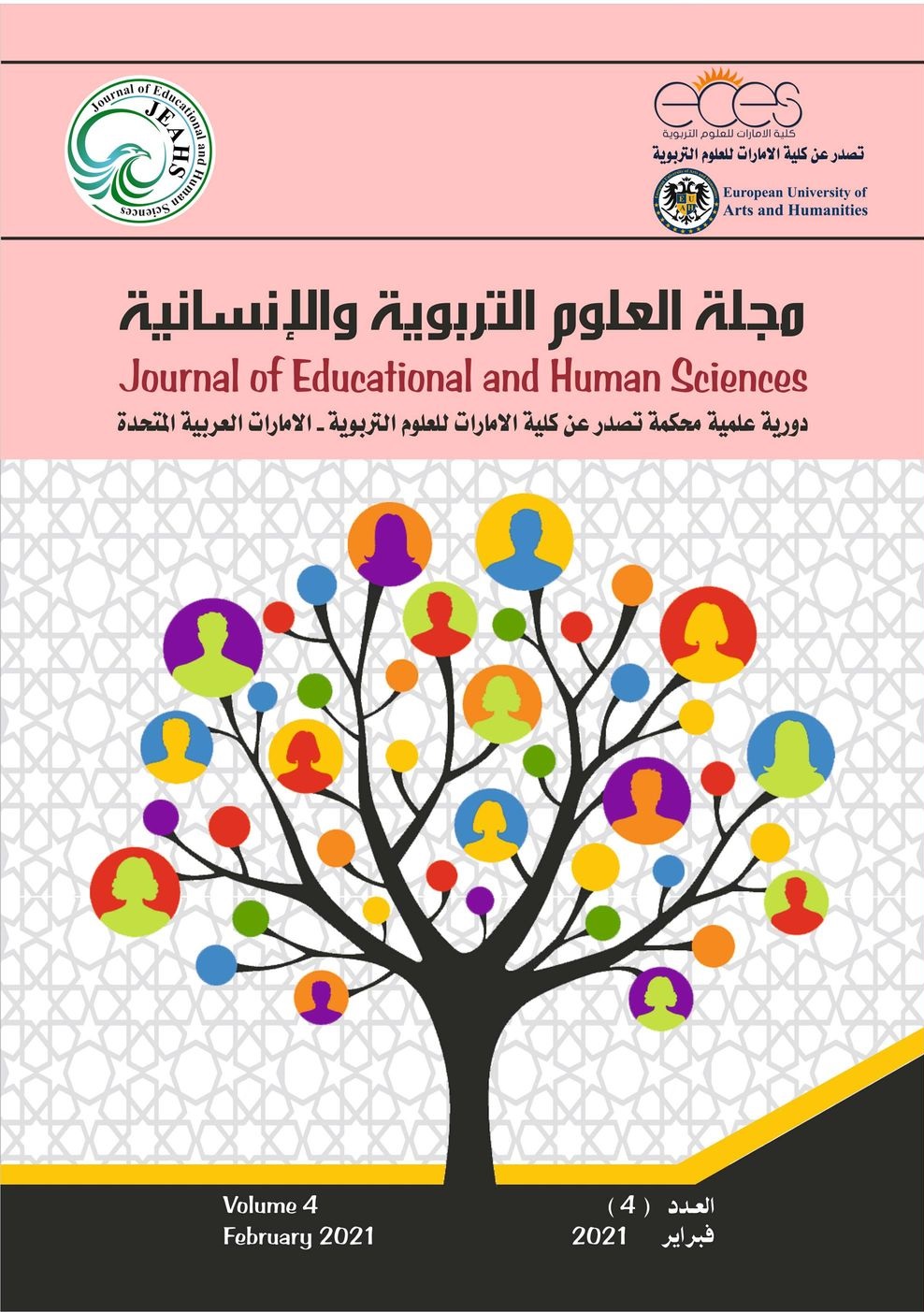Rooting in Contemporary Arab Painting
Abstract
The research consists of (Rooting in Contemporary Arab Painting) consists of four chapters. The first chapter is devoted to the methodological framework of the research. The research problem ended with the following question: What is rooting? What are its representations in contemporary Arab painting? It also included the aim of the research, its importance and the need for it. As for the second chapter, it dealt with two topics: The first came under the title (Rooting in Arab Culture), while the second dealt with (Contemporary Arab Painting). While the third chapter is devoted to research procedures, the researcher has selected (4) contemporary Arab plastic models in an intentional manner and analyzed by adopting the descriptive approach (qualitative content analysis method) based on the indicators of the theoretical framework. As for the fourth chapter, it was devoted to the results of the research, including: 1- I witnessed the heritage events in Arab culture represented in contemporary Arab painting, as they are topics that deal with the artist's emotional and subconscious circumstances. 2- Rooting in contemporary Arab painting reveals the ability of the contemporary Arab artist to employ Western plastic techniques and indigenize them through restoring them and submitting them to the creative self-associated with the civilized plastic heritage. Conclusions: 1- Contemporary Arab painting is an extension of the Arab cultural heritage. 2- The originality of the Arab composition stems from the artist's sincerity in expressing his heritage, and his openness to contemporary composition at the same time.
References
2. الحاج، اكرم محمد احمد (2018): تأصيل العلوم والتقانة، مجلة العلوم والبحوث الإسلامية، المجلد 19، العدد (2)، اكتوبر 2018.
3. رضا، صالح (2005): ملامح وقضايا في الفن التشكيلي المعاصر، القاهرة، الهيئة المصرية العامة للكتاب.
4. الرويلي، ميجان، والبازعي، سعد (2007): دليل الناقد الأدبي، (ط.5)، بيروت، المركز الثقافي العربي.
5. عبد الحليم، ماهورباشا (2015): تأصيل العلوم الاجتماعية في الفكر العربي المعاصر، مجلة الباحث الاجتماعي، العدد 11، مارس 2015.
6. عبد اللطيف، كمال (1987): التأويل والمفارقة نحو تأصيل فلسفي للنظر السياسي العربي، المغرب، الدار البيضاء.
7. مدكور، ابراهيم (1983): المعجم الفلسفي، القاهرة،الهيئة العامة لشؤون المطابع الأميرية.
8. مدكور، ابراهيم (ب ت): المعجم الوجيز، مصر ، وزارة التربية والتعليم.
9. مطلوب، احمد (2001): معجم مصطلحات النقد العربي القديم، (ط.1)، بيروت، مكتبة لبنان ناشرون.
10. الميلاد، زكي (2007): التأصيل والحداثة.. مفارقة أم معانقة، مجلة النبأ، مجلة شهرية ثقافية، العدد (85)، نيسان، 2007.
References
1. The Holy Quran.
2. Al-Hajj, Akram Muhammad Ahmad (2018): Establishing Science and Technology, Journal of Islamic Sciences and Research, Volume 19, Issue 2), October 2018.
3. Reda, Saleh (2005): Features and Issues in Contemporary Art, Cairo, gyptian General Book Authority.
4. Al-Ruwaili, Megan, and Al-Bazai, Saad (2007): A Literary Critic's uide, (ed. 5), Beirut, Arab Cultural Center.
5. Abdel Halim, Mahorbasha (2015): Establishing the Social Sciences in ontemporary Arab Thought, The Social Researcher Journal, Issue 11, arch 2015.
6. Abdel-Latif, Kamal (1987): Interpretation and paradox towards a hilosophical rooting of Arab political consideration, Morocco, asablanca.
7. Madkour, Ibrahim (1983): The Philosophical Dictionary, Cairo, eneral Authority for the Affairs of the Emiri Press.
8. Madkour, Ibrahim (bt): The Brief Lexicon, Egypt, Ministry of ducation.
9. Matlib, Ahmad (2001): A Dictionary of Ancient Arab Criticism erms, (ed. 1), Beirut, Lebanon Library Publishers.
10. Birth, Zaki (2007): Rooting and Modernity .. Paradox or Embracing, l Nabaa Magazine, Cultural Monthly Magazine, Issue (85), April, 2007.



